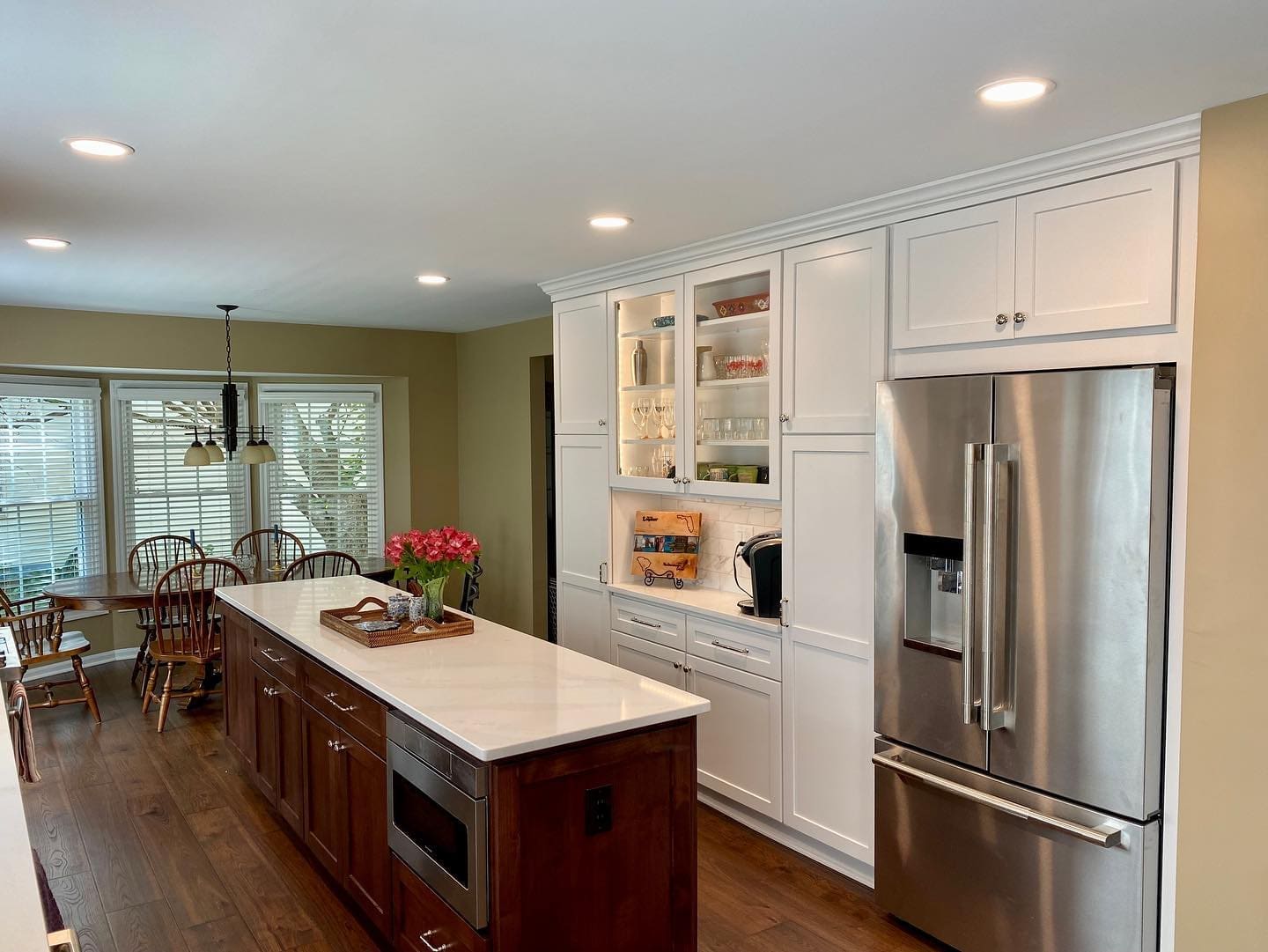 In an effort to understand the history of vinyl flooring, one has to take a quick review of its predecessors: linoleum and oil-cloth. ‘Oil-cloth’, as the name would imply was a coarse canvas-like material that was saturated in vegetable-based, animal-based, or petroleum based oils (varied from region to region) and occupied an area of the home much like an area rug. These cloths were often embroidered or hand-painted in order to add a little flair or charm to a space but were primarily a functional material that served as a decorative alternative to an earthen or rough wooden floor. Linoleum, by contrast, is a flooring that is comprised of granulated cork, wood flour, natural pigments and linseed oil–mixed, heated and compressed into a sheet form and mounted on a hemp or burlap woven material. Like oil-cloth, these were initially used as an area rug that provided a moisture resistant surface that was much easier to clean than the untreated wood floors of that era.
In an effort to understand the history of vinyl flooring, one has to take a quick review of its predecessors: linoleum and oil-cloth. ‘Oil-cloth’, as the name would imply was a coarse canvas-like material that was saturated in vegetable-based, animal-based, or petroleum based oils (varied from region to region) and occupied an area of the home much like an area rug. These cloths were often embroidered or hand-painted in order to add a little flair or charm to a space but were primarily a functional material that served as a decorative alternative to an earthen or rough wooden floor. Linoleum, by contrast, is a flooring that is comprised of granulated cork, wood flour, natural pigments and linseed oil–mixed, heated and compressed into a sheet form and mounted on a hemp or burlap woven material. Like oil-cloth, these were initially used as an area rug that provided a moisture resistant surface that was much easier to clean than the untreated wood floors of that era.
Circa 1933, vinyl-based flooring made its commercial debut in the form of tiles which were composed of vinyl chips, clay and a plasticizing binder. Shortly thereafter, early 1940’s, linoleum became available in rolls of sheet material and was quickly becoming the premier flooring surface in domestic and commercial flooring applications. Soon, vinyl flooring manufacturers followed suit in the rolled sheet goods market and were able to bring it to the marketplace much more economically. These floors required frequent upkeep, which included the strip and wax process in order to maintain their looks and performance benefits. As time went on, vinyl manufacturers introduced the much heralded ‘no-wax’ floor which boasted a thin layer of clear vinyl heat-clad to the surface of the typical vinyl floor. The designs of the floor were quite simple really, looking exactly like the blend and mix of the colored vinyl aggregate that was their composition.
Contemporary Vinyl Flooring
In 1957, Congoleum Corporation expanded upon a printing process known as rotogravure to develop and produce the type of vinyl flooring that is dominant in today’s market. The process utilizes a backing material of felt, vinyl or aerated vinyl (creates a cushiony feel) that is heat fused to a paper-like sheet of printed material and then these are fused to a translucent layer of PVC or urethane based ‘wear layer’. This process provides incredible flexibility in design and color as the printing method is the same process used in creating wallpaper–style, design and color are limitless.
Within the past 20 years, vinyl flooring manufacturers have introduced a relief embossing procedure to the manufacturing process which renders a textured surface which provides a greater authenticity to the print: natural stone visuals may have cleft, grout lines will be recessed, and floral patterns will be more realistic looking. The performance of the product is almost exclusively generated by the quality of the translucent surface that makes contact with the traffic.
Every year that passes brings upon new and higher levels of scuff and scratch resistance as well as improvements upon stain or contaminant resistance. The newer vinyl floors are exceptionally easy to maintain and are significantly less prone to surface damage than those available just a few short years ago! Another trend that is occupying the vinyl flooring market is the utilization of a vinyl backing material that doesn’t require a permanent bond to the sub-floor. Oddly enough, this novel benefit is actually replicating a feature that was present in its Great-great-grandfather, ‘linoleum rug’. As much as these floors have evolved with the ever-changing, ever-challenging technology, it’s nice to know that some new features will actually pay a silent tribute to its roots!
The Resurgence of Linoleum
With the wave of ‘green’ awareness sweeping the world today, linoleum is getting a second chance on life. Inasmuch as every component that is used in the production of linoleum is directly sourced from nature, the popularity of this product is gaining strength in the design and architectural community. The technology behind these products, unlike vinyl products, has been relatively static for the 150 years that it’s been around. The production equipment, as you might assume, has evolved to be more efficient but the formula for the product itself is unchanged. Unlike solid vinyl flooring which demands the need for dressings (wax), linoleum gains sheen and performance from low-rpm buffing. This ‘treatment’ draws the linseed oil to the surface of the material, and ‘burnishes’ the surface to a nice, even glow—enhancing the natural luster of the product. With the broad palette of speckled and marbleized colorations available, designers are frequently integrating borders and decorative insets into the kitchen flooring project–injecting a bit of style and daring panache. Then again, it’s perfectly fine to use one coloration, with its inherent swirls and mottling, to represent itself in a gorgeous kitchen landscape.





